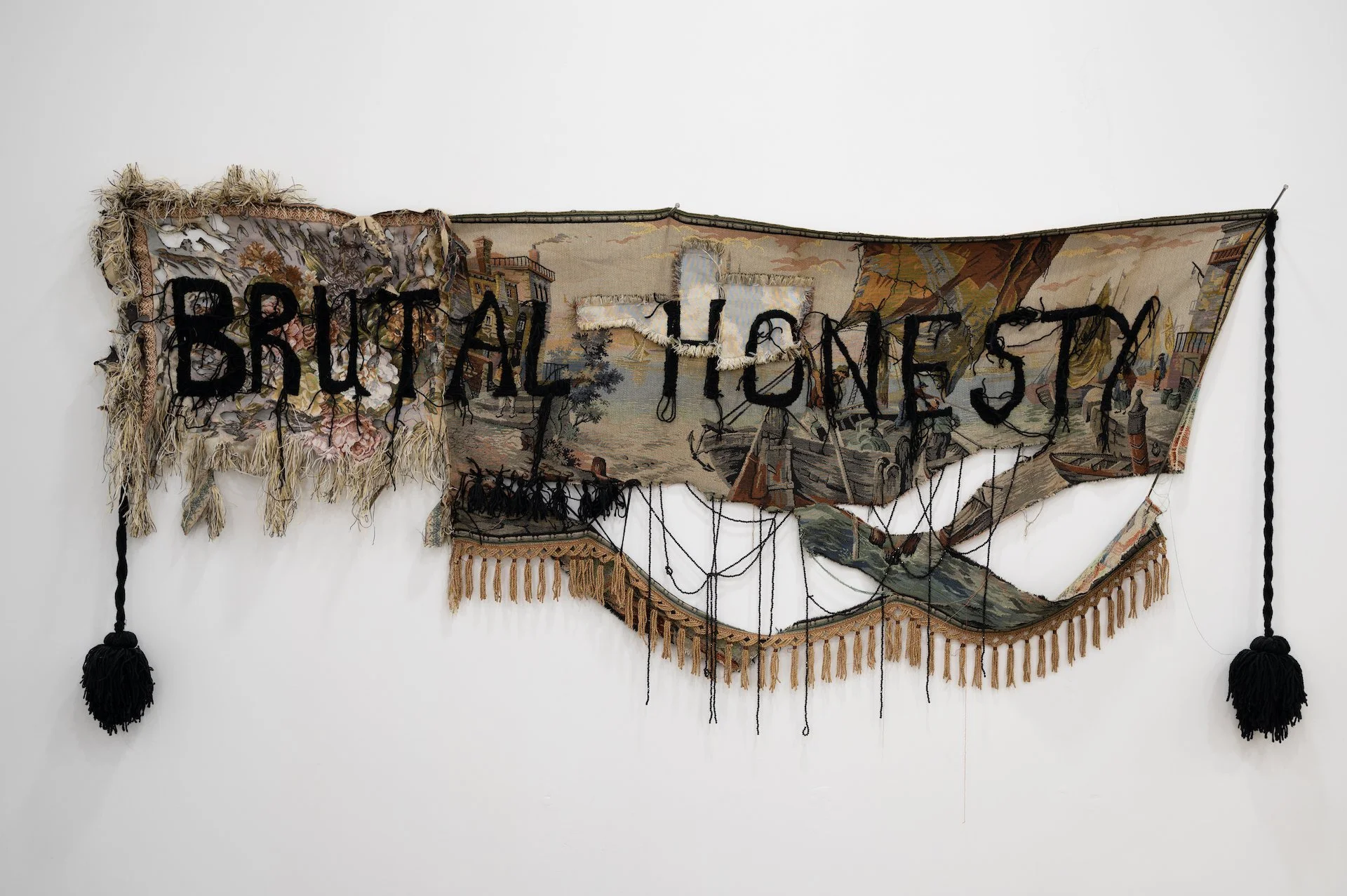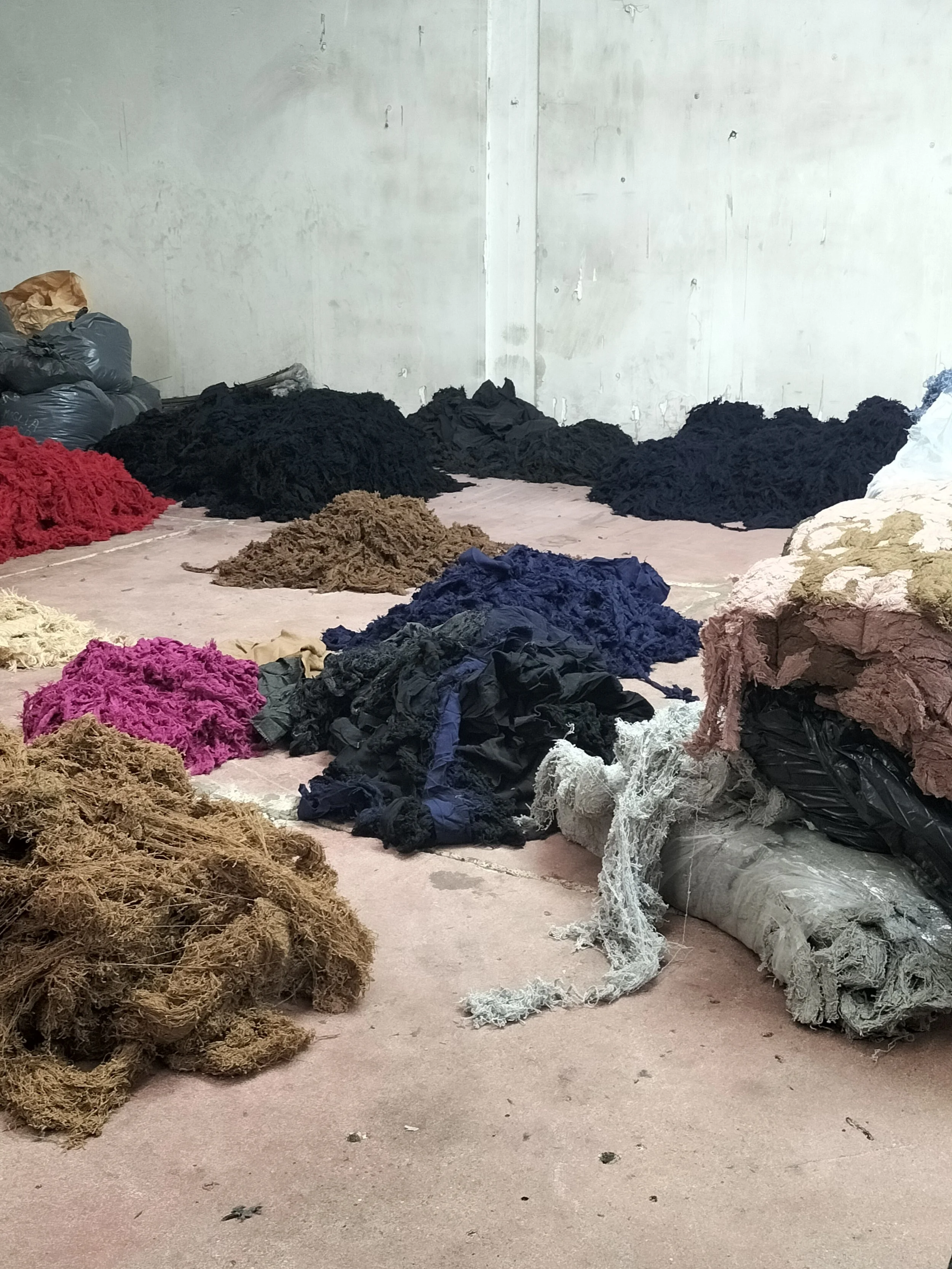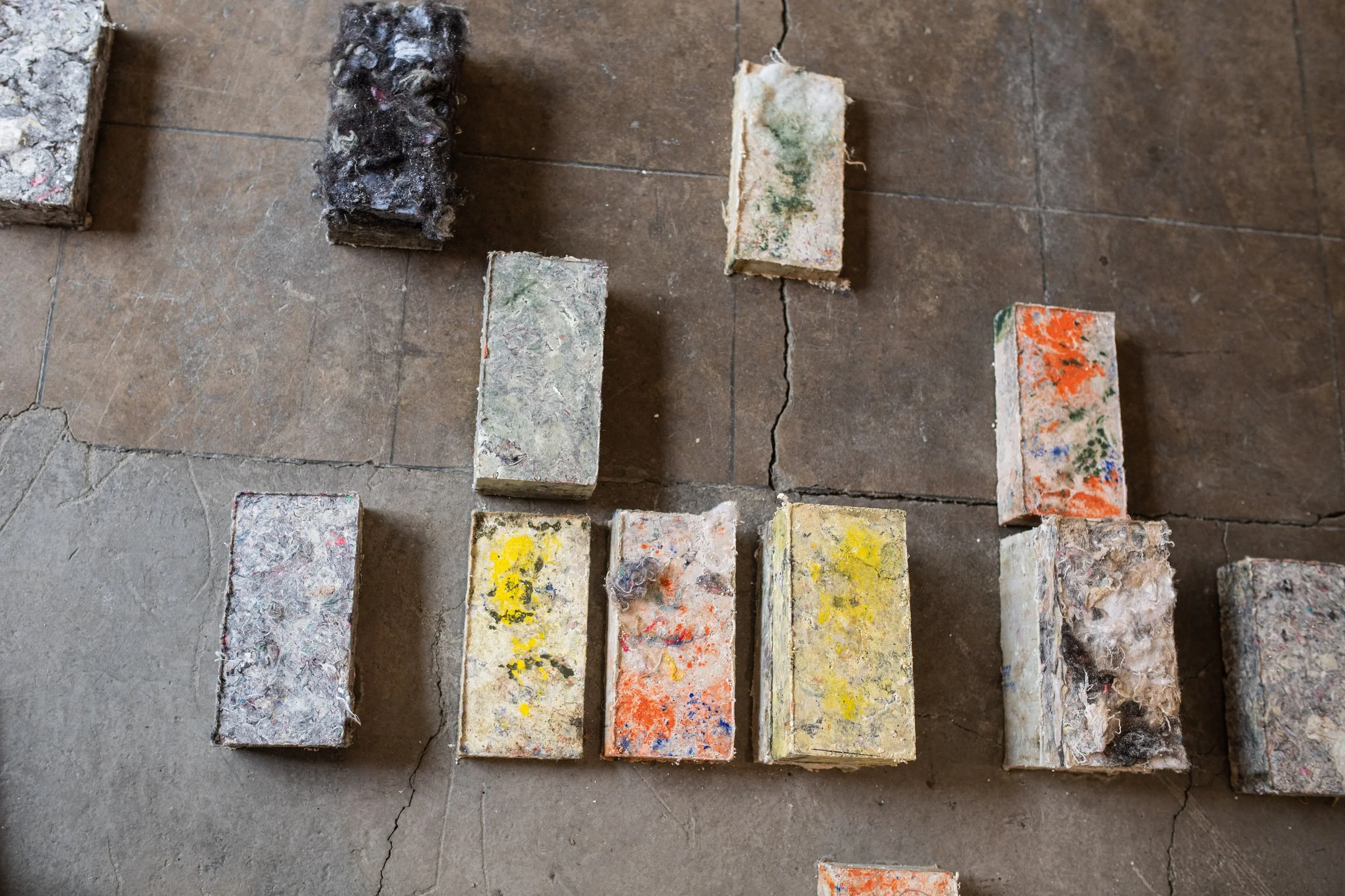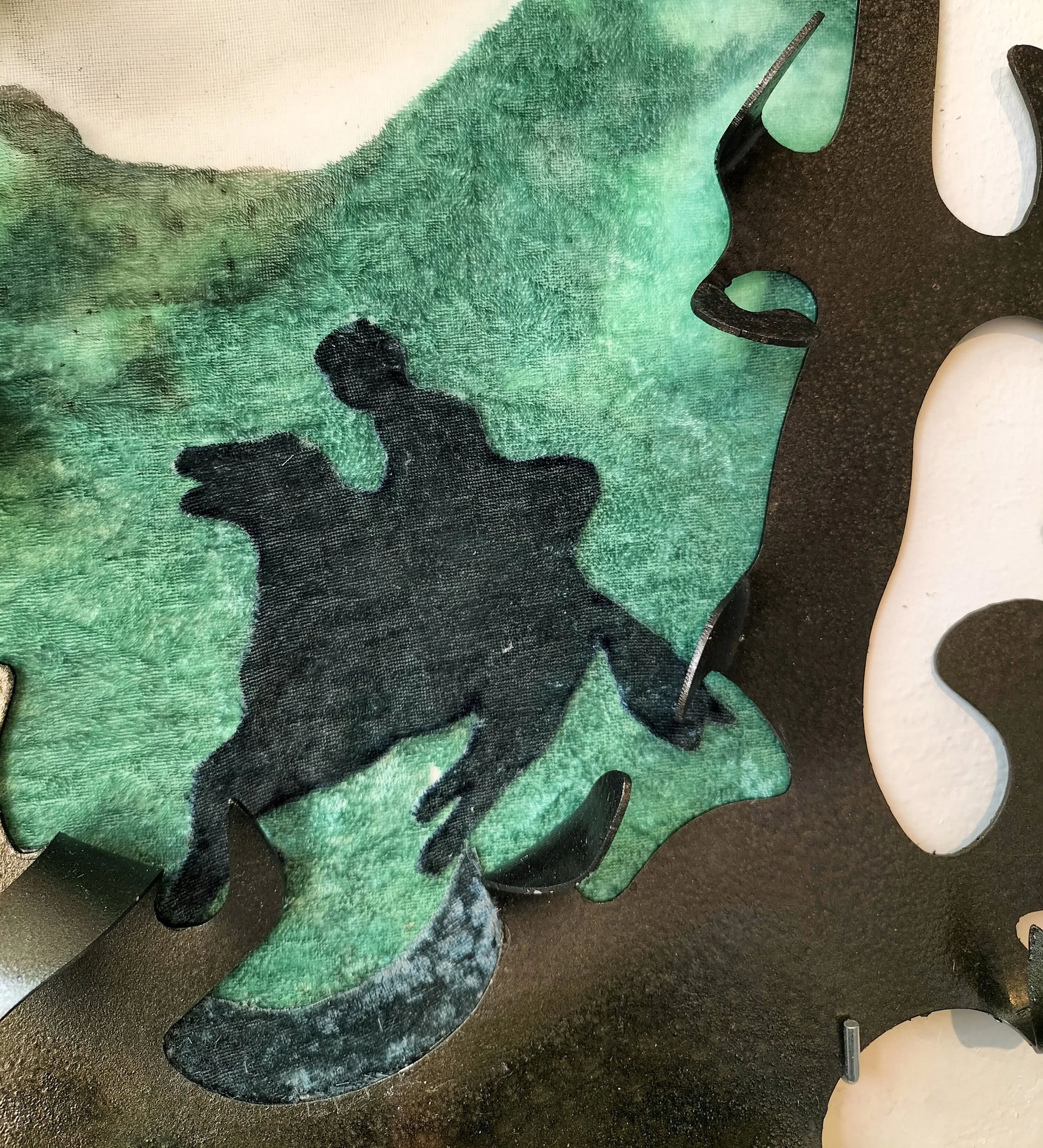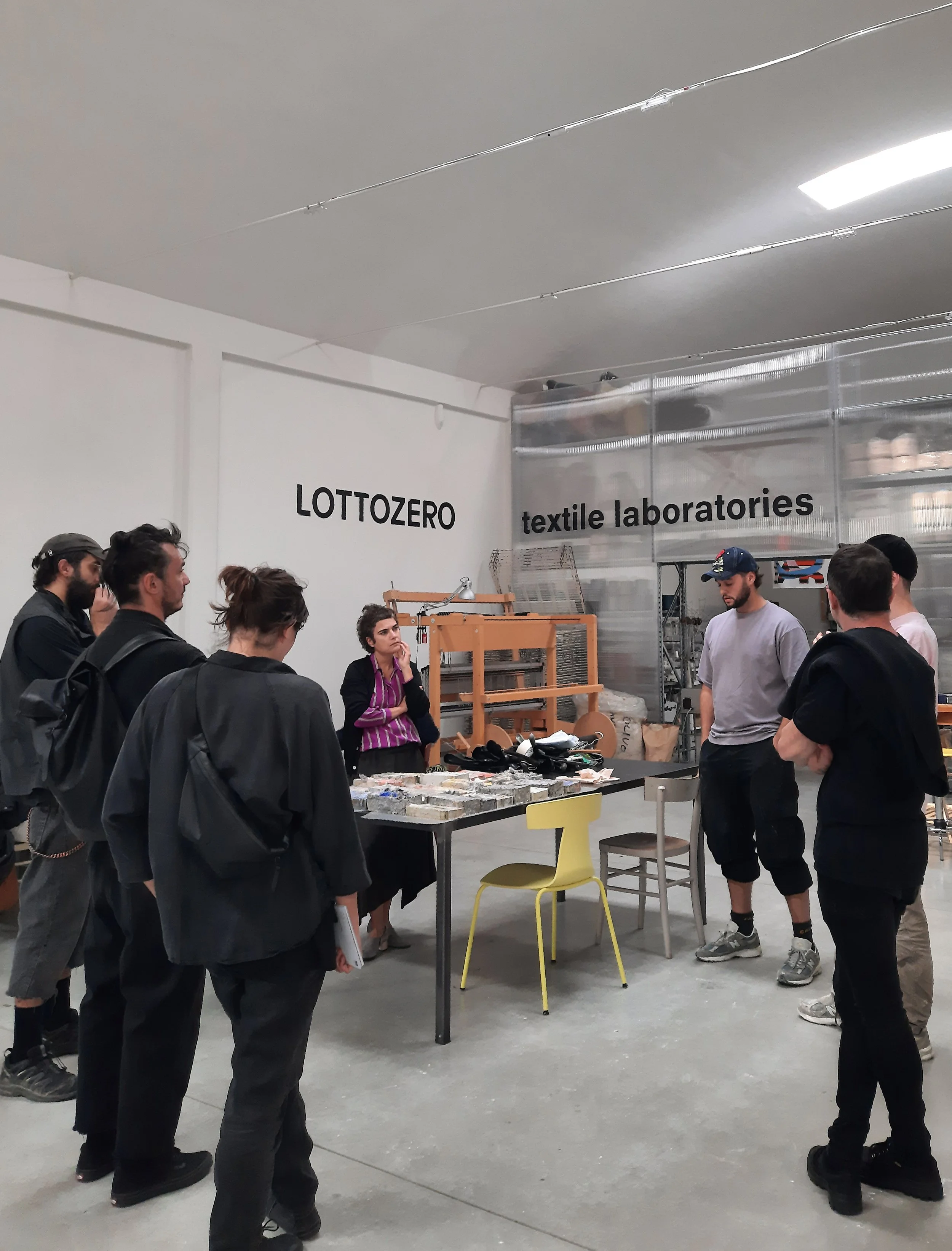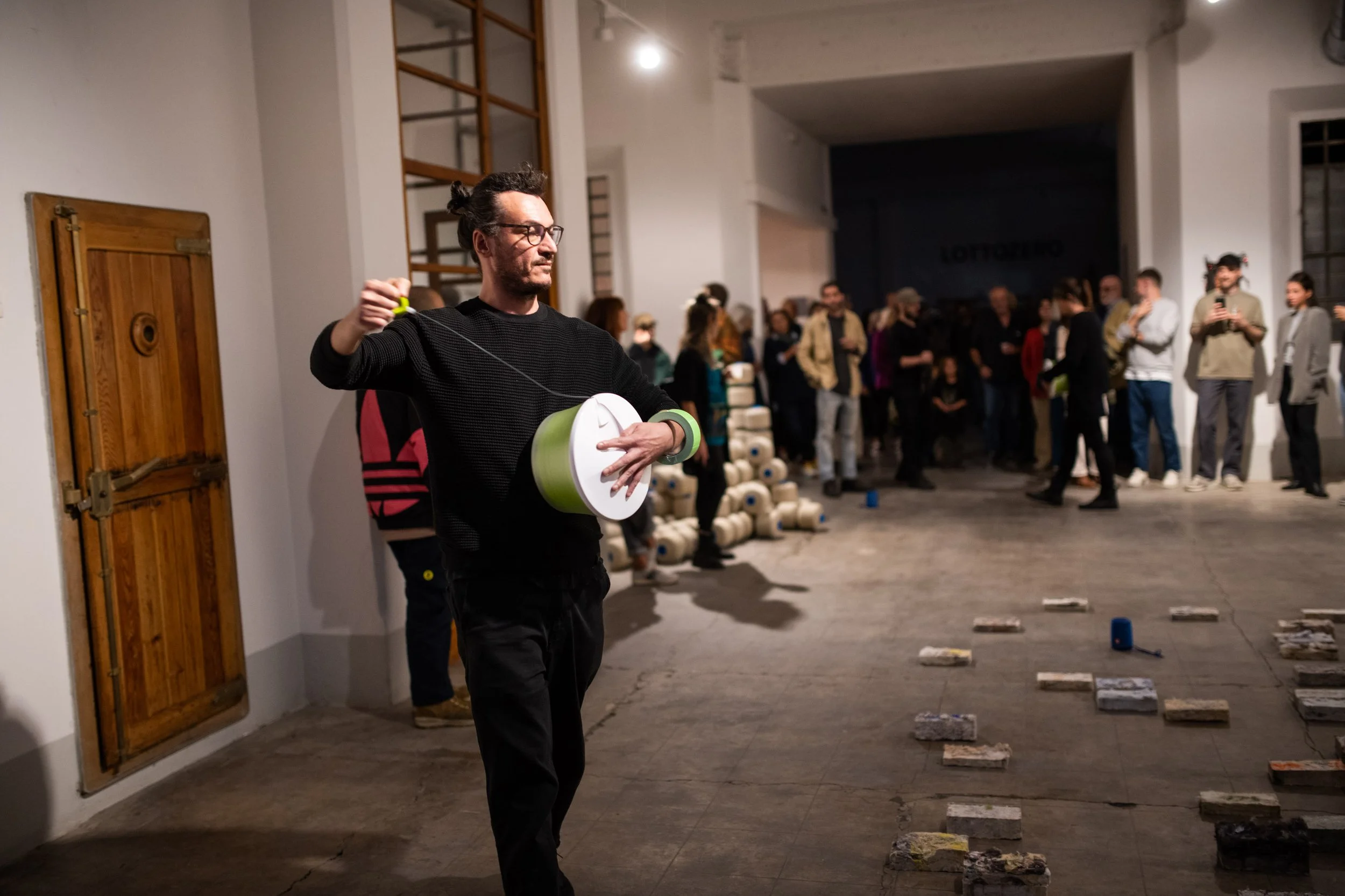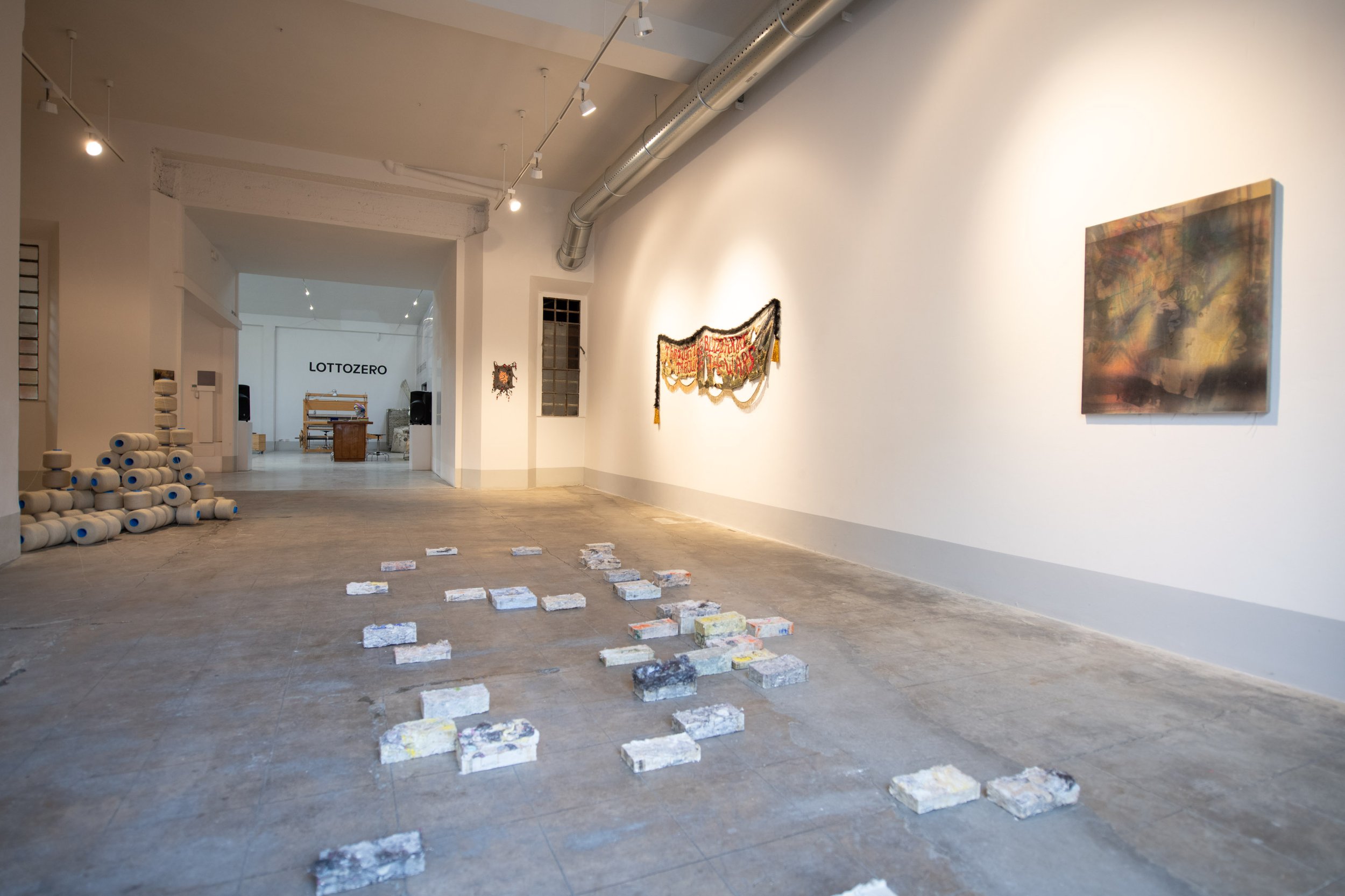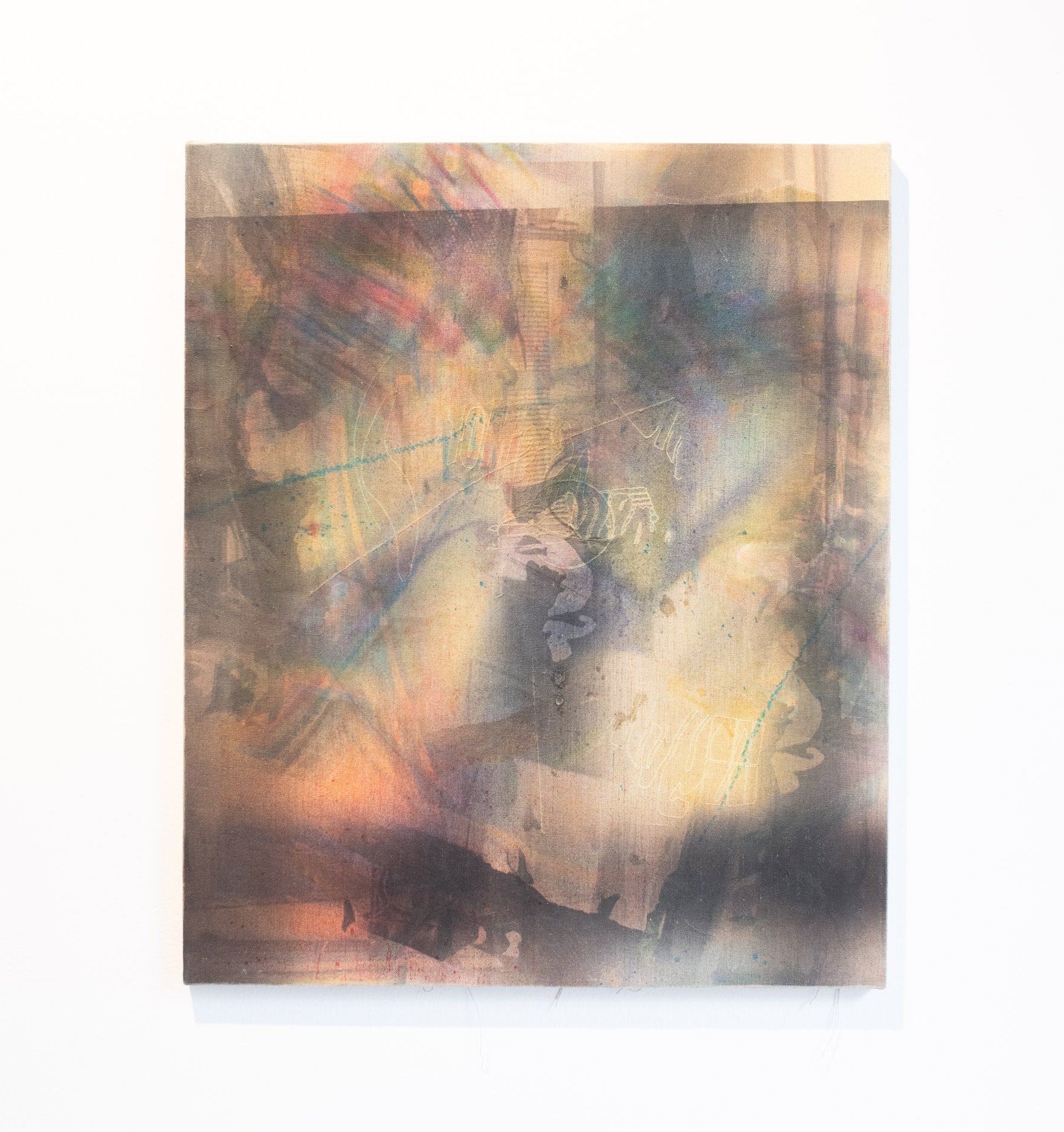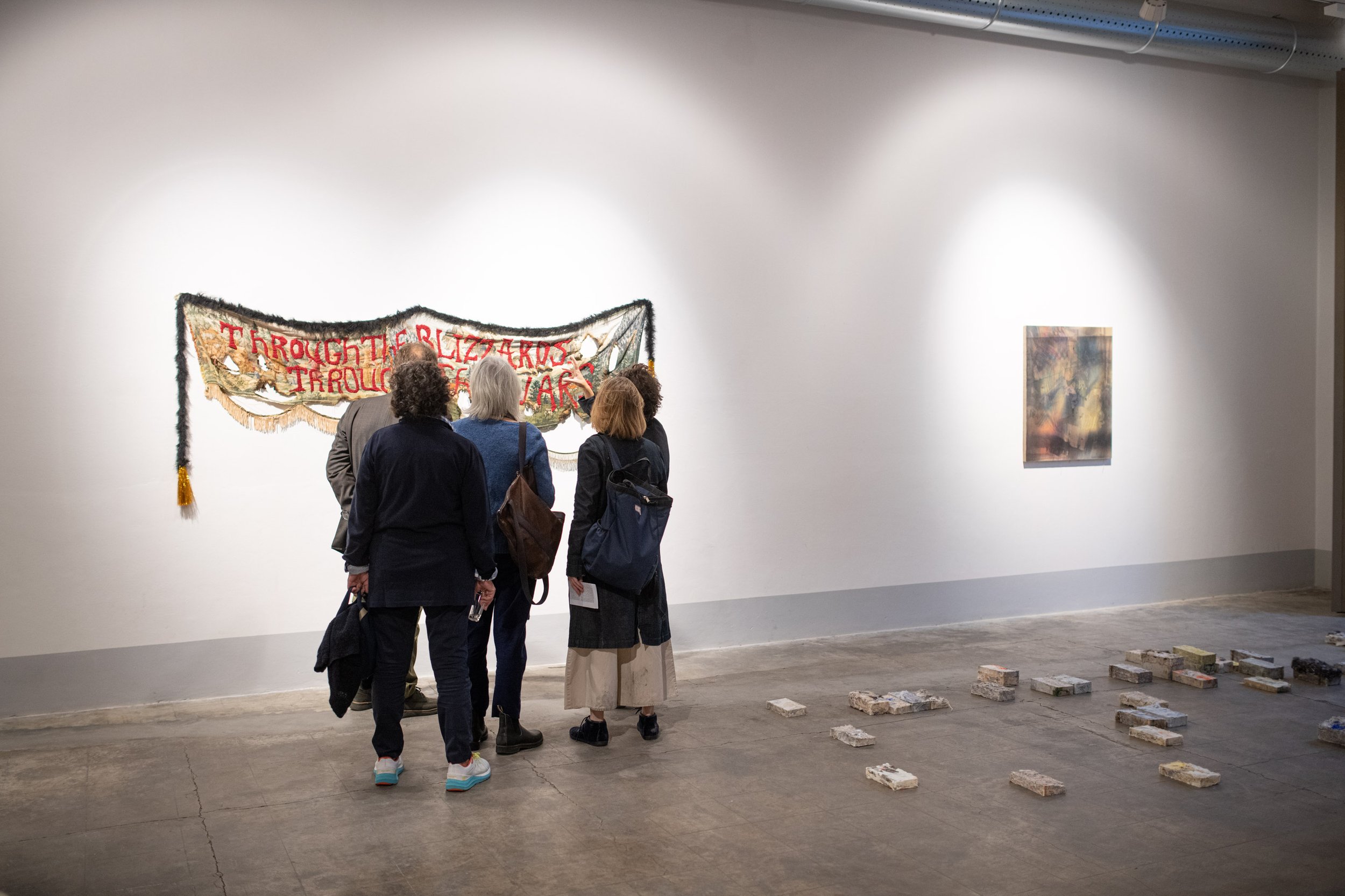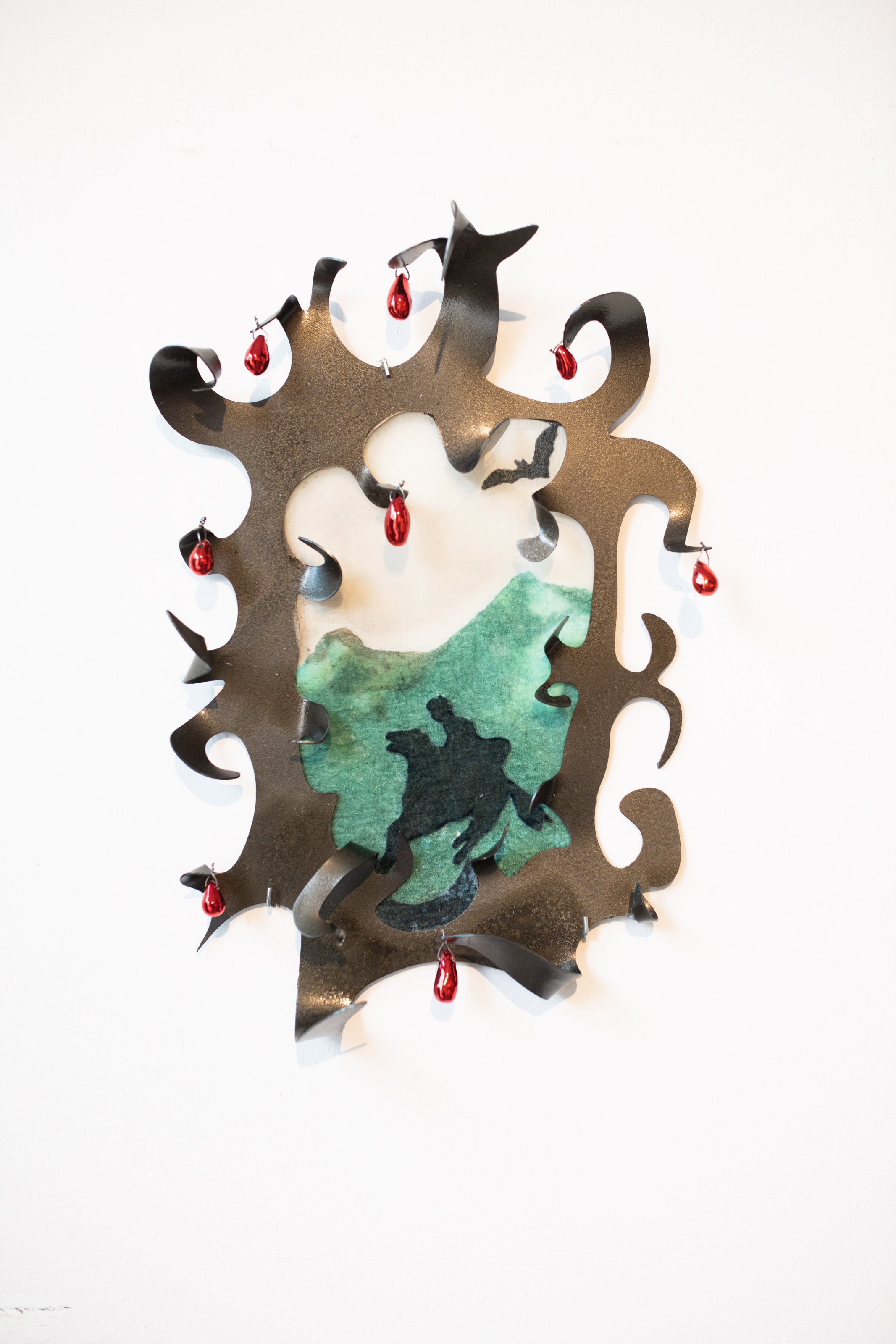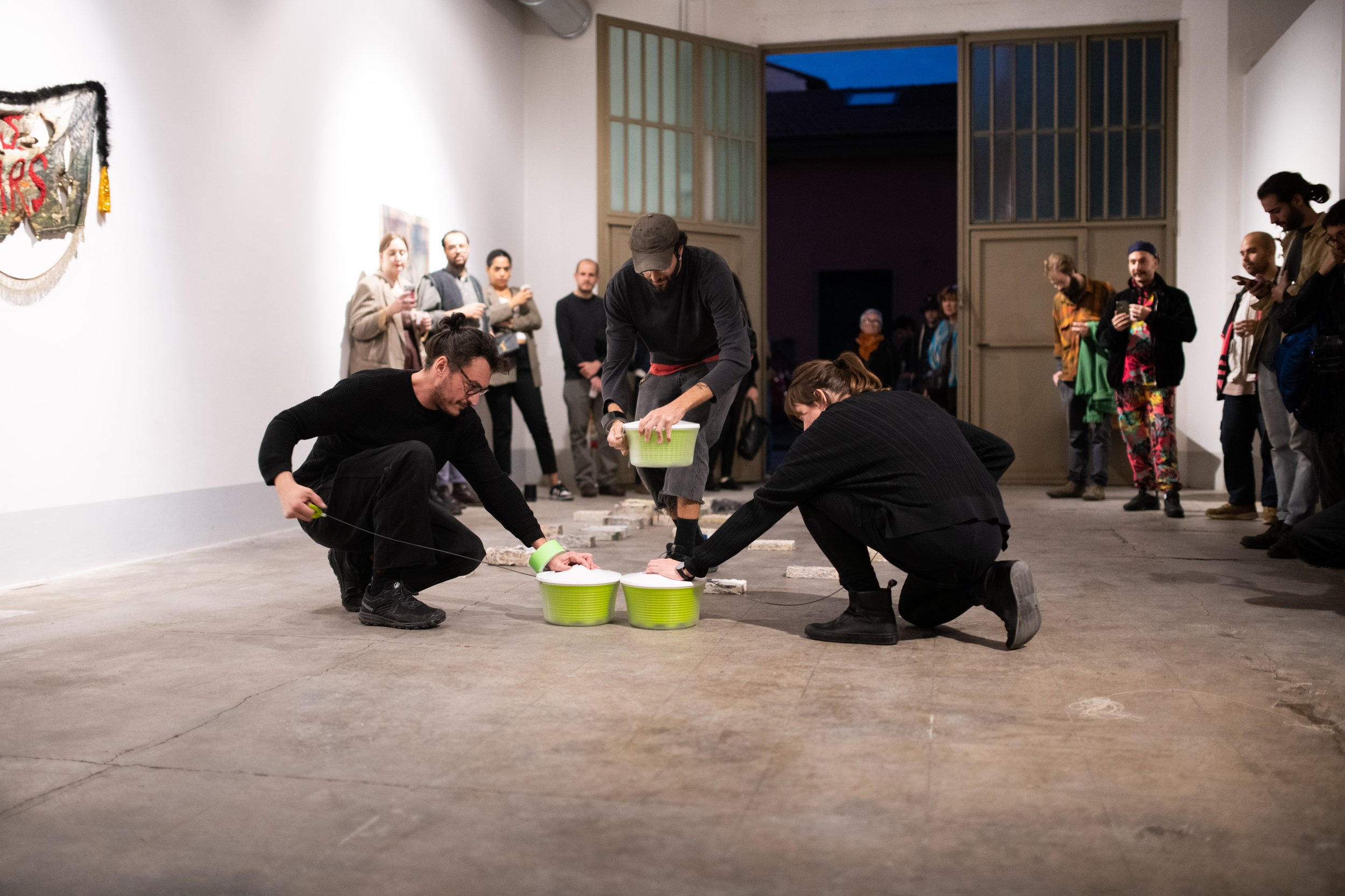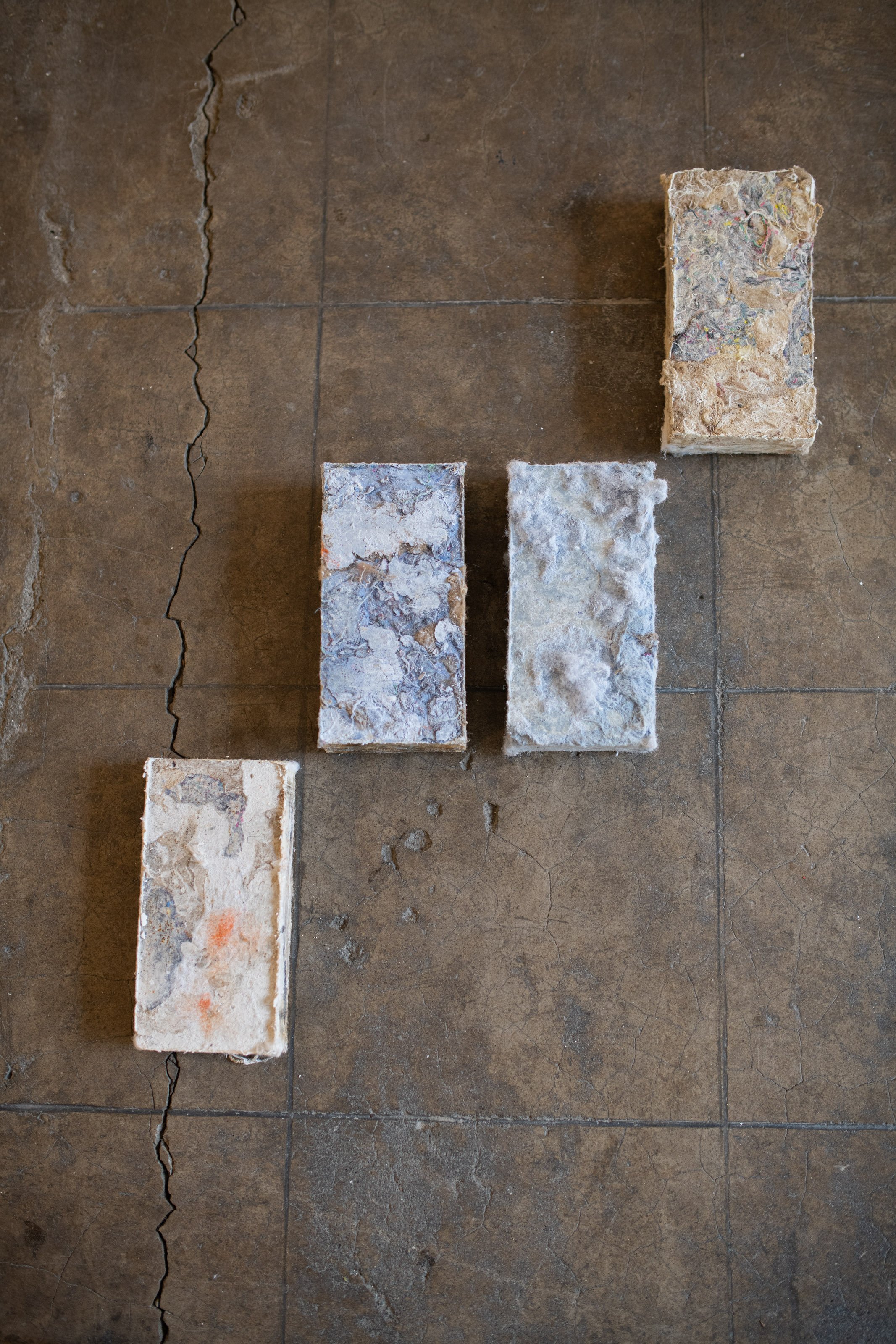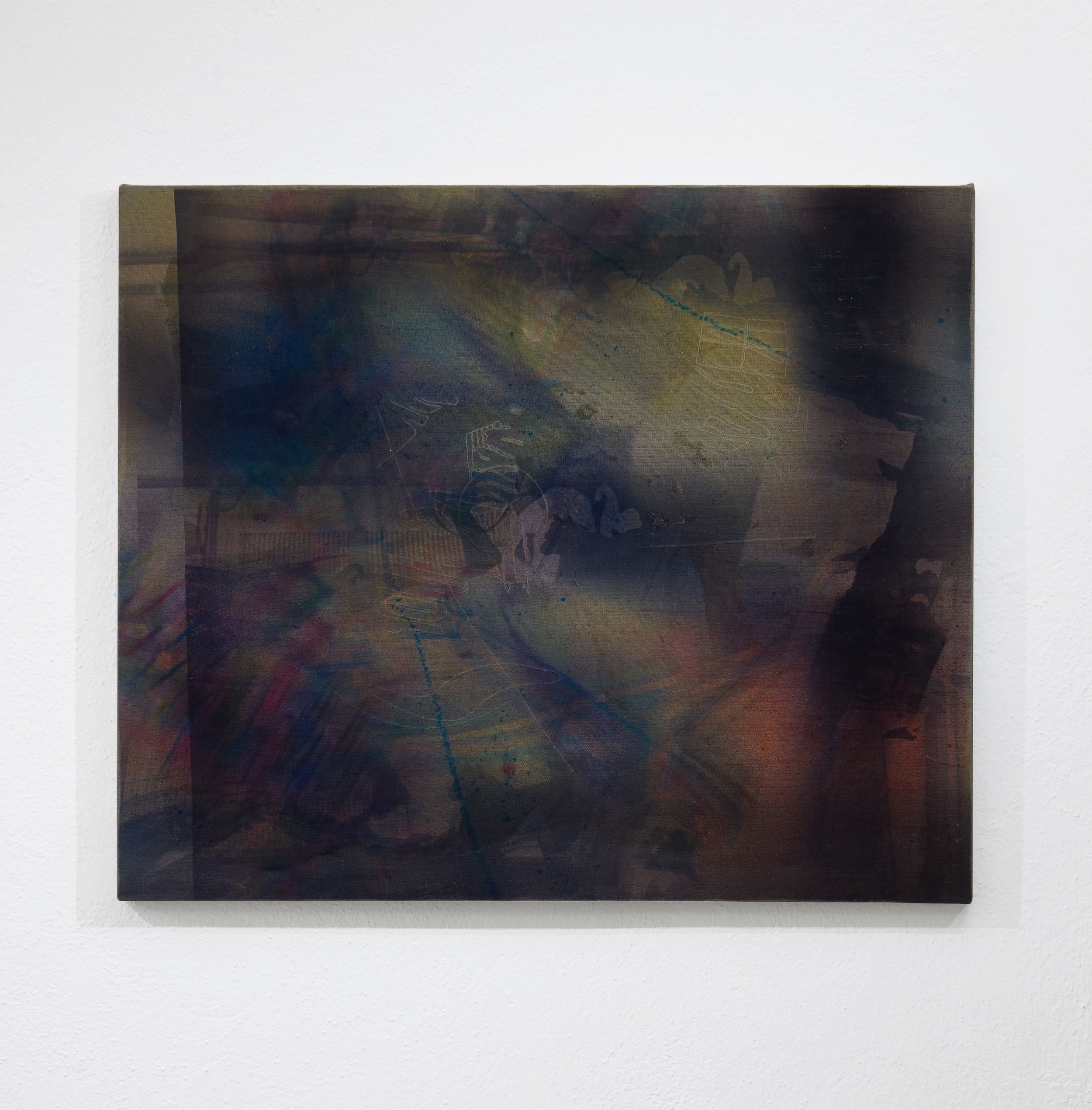Manuel Resch and Maximilian Maria Willeit, Untitled, acrylics sublimation print and textile on cotton, 145 x 160 cm. Photo: Roman März.
Gvantsa Jishkariani, Brutal Honesty, embroidery on Soviet period re-worked, torn, burnt tapestries, glass beads 60 x 260 cm, 2022.
The ARTISTs
Manuel Resch and Maximilian Maria Willeit (Bolzano 1996) live in Berlin, where they run a studio as an artistic duo, working mainly with painting, collage and digital printing on various media.
Their interest lies in the margin of error or incongruence of the image, which is intensified through the inclusion of the gestures while printing, in an extreme decomposition and distortion that borders on abstraction. The works are often a result of layering, in which fictional settings combine with the self-referential dimension of text and with the means of painting, on different materials and supports.
Gvantsa Jishkariani (Rustavi, 1991) is a multimedia artist based in Tbilisi, Georgia.
Her work is steeped in the visual culture of her own country, whose marks are imprinted both in the aesthetics of everyday life as well as in the decorative style of the architecture and monumental sculpture of the recent Soviet past, in order to distance herself from it through her own reinterpretation, often desecrating, which stems both from a temporal-generational gap and from her scope as an international artist.
The tapestries she works on are Soviet-made and still constituted a popular piece of decor in Georgian homes until the end of the early 2000s.
Fascinated by the use of craft and traditional techniques and the combination of different materials Gvantsa also works with glass, mosaic, and metal.
The Residency
In October 2022 the artists spent a two-week residency period at Lottozero, preceded by a focus meeting in June, during which they visited some companies in the textile district, gaining an insight into some aspects of Prato's production reality, in particular those related to the market for rags and the regeneration of wool.
The artists were given the opportunity to learn new tools and techniques related to the languages of textiles, aimed at the production of a series of new works.
One of the goals of the residency was to attract new artistic figures to Tuscany, representatives of a young generation born in the 1990s who, despite coming from different cultural backgrounds, share a similar aesthetic in the way they process and rework the contemporary media landscape, in a mash-up of high and low culture, art and craft, tradition and the digital world.
The residency was co-curated by Alessandra Tempesti and Elisa Barison, curator of Galleria Civica di Bressanone, where the artists had an exhibition in November 2022, showing some of the artworks produced during the residency at Lottozero.
Comistra, Prato.
Comistra, Prato.
Manuel Resch and Maximilian Maria Willeit, Untitled (detail), plaster, textile, various sizes, 2022. Photo: Rachele Salvioli.
Gvantsa Jishkariani, Untitled (detail), metal, fabric, 2022.
experimenting with textile techniques
Manuel Resch and Maximilian Willeit created a floor installation of bricks made of gypsum and textile fibers coming from the reuse of byproducts of the textile supply chain.
The artists' interest in the semantics of the brick, an emblem of the industrial building scene and cipher of the modularity of minimalist sculpture, here becomes an object that also reproduces in scale the pressure of rag bales seen in the district. The act of pressing the fibers condenses a reflection that extends to the life cycle of the material, and in a broader sense of any material, understood as a unit of measurement or cell of construction.
Inspired by a yarn produced by Lottozero retrieving wool from native South Tyrolean sheep (otherwise treated as waste material) the artists also initiated a new series of paintings that combine digital images, UV print, and industrial embroidery.
During her residency at Lottozero Gvantsa Jishkariani acquired the process of devoré, a corrosion printing technique that removes the cellulosic part of a mixed-fiber fabric.
It’s an intervention of partial destruction, from which the artist's figurative imagery later emerges, combining different registers and sources of inspiration, such as high culture and low culture, folklore, and the digital world. “The knight in the night”, embossed and drawn on corroded velvet, is inspired by a Georgian poem and at the same time recalls the image of a Soviet cigarette brand.
Exchange with local artists
PHASE, an artistic and curatorial collective based in Prato, was invited to interact with the artists-in-residence, in the spirit of a project that wanted to be a laboratory for research, cultural comparison and exchange of practices.
For the residency closing event, Phase developed a performative action, part of a series the collective is carrying out within its own re-evaluation and questioning of the concept of performance.
The action is based solely on the interrelation of four elements: place, action, space and sound. The intervention starts from the choice of an everyday object, which triggers a dynamic that ends up destabilizing the relationship one has with that object, in the search of identification with the present moment, with the reality of play, and with the absurdity of the everyday.
Meeting with the artists from Phase collective.
Phase, EHI GIO’, performative action, 15th October 2022, Lottozero, Prato. Photo: Rachele Salvioli.
Photos: Rachele Salvioli, Jürgen Eheim for Südtiroler Künstlerbund
The project is part of



